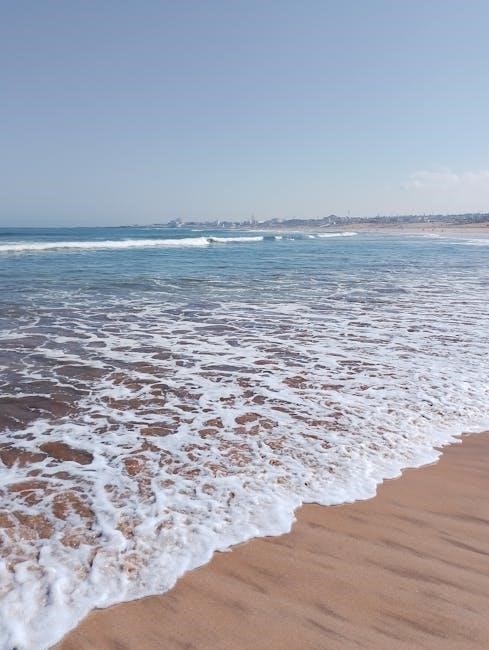
Crystal growing kits offer a fun and educational way to explore the science of crystal formation. These kits provide materials and instructions to grow vibrant crystals at home‚ teaching geology and chemistry concepts while fostering curiosity and patience in both children and adults.
1.1 What is a Crystal Growing Kit?
A crystal growing kit is an educational and interactive science set designed to help users grow their own crystals at home. These kits typically include chemical powders‚ dye‚ seed crystals‚ a growing container‚ and a magnifying glass. They also provide detailed instructions to guide the process. The kits are suitable for both children and adults‚ offering a hands-on STEM experience that teaches principles of geology and chemistry. Many kits meet safety standards and include materials for displaying the finished crystals‚ making them both fun and educational.
1.2 Benefits of Using a Crystal Growing Kit
Crystal growing kits offer a unique educational experience‚ teaching users about chemistry‚ geology‚ and the natural sciences. They foster STEM learning‚ encouraging curiosity and critical thinking. Growing crystals also enhances patience and observation skills‚ as the process requires time and attention. Additionally‚ these kits provide a creative outlet‚ allowing users to experiment with colors and shapes. The hands-on activity makes complex scientific concepts accessible and engaging‚ making it an ideal project for both children and adults. It also promotes a sense of accomplishment as users observe their crystals form and grow over time.
1.3 Safety Precautions for Crystal Growing
When using a crystal growing kit‚ prioritize safety by wearing protective gloves and goggles to avoid skin and eye irritation. Work in a well-ventilated area to prevent inhaling chemical fumes. Avoid ingesting any substances‚ as they may be hazardous. Keep the kit out of reach of children and pets. Dispose of unused chemicals responsibly‚ following local regulations. Follow the instructions carefully to minimize risks; Supervise children during the process‚ even if they are assisting. Proper safety measures ensure a safe and enjoyable crystal-growing experience.
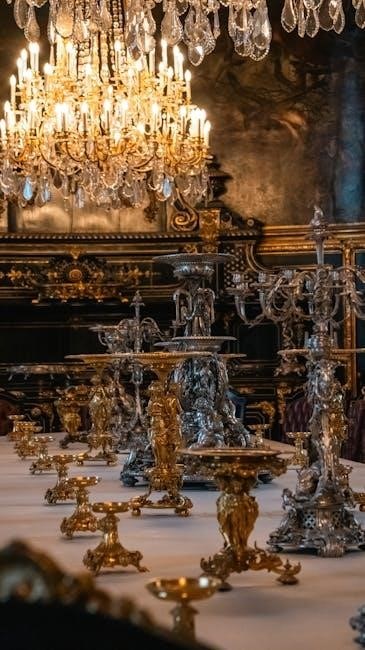
Materials and Equipment Included in the Kit
Crystal growing kits usually include super saturation powder‚ a seed crystal‚ display stand‚ food coloring‚ and instructions. Kits often include gloves and goggles for safety.
2.1 Components of the Crystal Growing Kit
A typical crystal growing kit contains a super saturation powder‚ a seed crystal‚ a display stand‚ food coloring‚ gloves‚ goggles‚ and detailed instructions. Some kits may include a growing container‚ a stirrer‚ and a thermometer for precise temperature control. The powder is usually the primary chemical compound for crystal formation‚ while the seed crystal provides a surface for growth. The display stand helps showcase the final crystal‚ and the coloring adds visual appeal. Safety gear like gloves and goggles is essential for handling chemicals safely during the process.
2.2 Additional Materials Needed for Crystal Growth
Beyond the kit‚ you’ll need a clean glass or plastic container to mix the solution‚ a spoon or stirrer‚ and possibly a measuring cup for accurate water measurement. A thermometer is helpful if temperature control is necessary. A stable‚ undisturbed area for crystal growth is essential‚ and optional items like a desk lamp can enhance display. Paper towels or a cloth are useful for spills‚ and extra gloves or goggles may be prudent. An airtight container or plastic wrap can prevent evaporation‚ and patience is crucial as crystal growth takes time.
2.3 Proper Storage and Organization of Equipment
Proper storage and organization of your crystal growing equipment ensure longevity and safety. Clean and dry all tools thoroughly after use to prevent contamination. Store chemicals in their original containers‚ tightly sealed‚ and label them clearly. Keep the seed crystal in a separate‚ protected container to avoid damage. Use a designated box or case for smaller items like strings‚ hooks‚ or weights. Store the kit in a cool‚ dry place‚ out of reach of children and pets. Organizing your equipment this way ensures everything is easily accessible and ready for your next crystal-growing project.
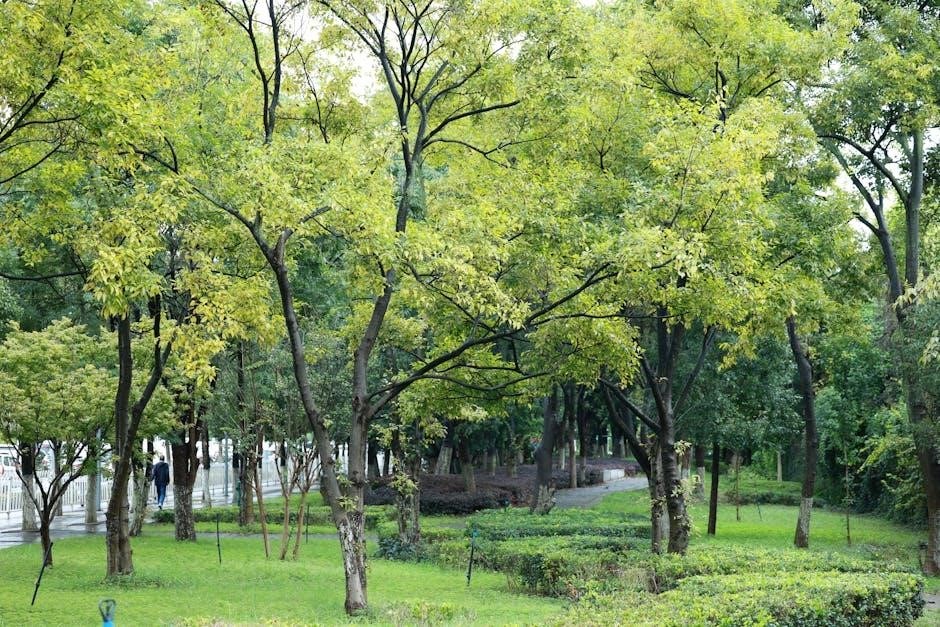
Preparing the Crystal Growing Solution
Prepare the solution by dissolving the provided crystal-growing powder in boiling water‚ stirring until fully dissolved. Add a few drops of food coloring if desired.
3.1 Mixing the Crystal Growing Chemicals
To mix the crystal-growing chemicals‚ start by wearing gloves and goggles for safety. Measure the powdered chemical and water accurately using the provided scoop and measuring cup. Slowly pour the powder into the water while stirring with a spoon to avoid lumps. Ensure the mixture is fully dissolved and clear. If needed‚ gently heat the solution to aid dissolution. Allow it to cool before use. Always mix in a well-ventilated area to prevent inhaling fumes. Avoid tasting or ingesting any chemicals‚ as they may be harmful.
3.2 Dissolving the Powder in Water
Dissolve the crystal-growing powder in water by slowly adding it to a measured amount of warm water. Stir gently with a spoon or stirrer until the powder fully dissolves. Ensure the water is not too hot‚ as this can cause the solution to evaporate quickly. If the powder doesn’t dissolve easily‚ gently heat the mixture‚ but avoid boiling. Once dissolved‚ allow the solution to cool slightly before use. A clear‚ saturated solution is essential for crystal growth. Proper dissolving ensures even nucleation and healthy crystal formation.
3.3 Adding Color to the Solution
Add a few drops of food coloring or dye to the solution for a vibrant crystal. Stir well to ensure the color is evenly distributed. The amount of color can vary‚ but start with 5-10 drops and adjust for intensity. The color enhances the visual appeal of the crystal but doesn’t affect its growth. Avoid over-saturating the solution with color‚ as it might interfere with crystal clarity. This step is optional and adds a creative touch to your crystal-growing project.
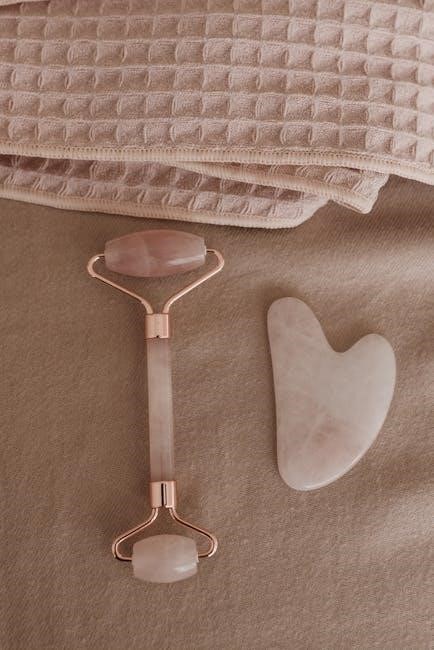
Setting Up the Crystal Growth Environment
Create a stable environment for crystal growth by placing the setup in a clean‚ dry area away from vibrations and drafts. Control temperature between 65-75°F for optimal growth. Use the seed crystal provided to initiate formation. Ensure the solution is undisturbed to promote even crystal development.
4.1 Choosing the Right Container for Crystal Growth
Select a clean‚ clear glass or plastic container with a wide mouth to allow proper evaporation and easy observation. Ensure the container is large enough to hold the solution without overflowing. Avoid metal containers‚ as they may react with the chemicals. A stable and flat-bottomed container is ideal to prevent tipping. Rinse the container thoroughly before use to remove any impurities. This setup ensures optimal conditions for crystal formation and visibility throughout the growth process.
4.2 Placing the Seed Crystal
To place the seed crystal‚ start by ensuring it is clean and free from impurities. Gently tie the seed crystal to a string or small hook provided in the kit‚ leaving enough space for it to hang freely in the solution. Lower the seed crystal into the supersaturated solution slowly to avoid splashing or introducing air bubbles. Position it so it does not touch the container’s sides or bottom‚ as this could disrupt growth. Secure the setup in a stable location to prevent vibrations and ensure undisturbed growth. Patience is key‚ as crystal growth is a slow process. Regular observation without disturbing the setup will allow you to monitor progress effectively. Proper placement is crucial for optimal crystal formation‚ so follow the kit’s instructions carefully to achieve the best results.
4.3 Maintaining the Optimal Temperature
Maintaining the optimal temperature is crucial for crystal growth. Most crystals grow best at room temperature (around 20-25°C or 68-77°F). Avoid placing the container near drafts‚ heaters‚ or direct sunlight‚ as temperature fluctuations can disrupt growth. Use a thermometer to monitor the temperature and ensure consistency. If your kit includes a heating or cooling source‚ follow the instructions carefully. Sudden changes can cause imperfections or prevent growth. A stable environment fosters steady and uniform crystal formation‚ so keep the setup in a consistent temperature zone throughout the process.

The Crystal Growth Process
Crystal growth involves dissolving chemicals‚ nucleation‚ and slow accumulation of particles. Over time‚ the solution transforms into a solid crystal structure through careful observation and patience.
5.1 Understanding Nucleation and Crystal Formation
Nucleation is the initial stage where particles in the solution come together‚ forming a crystal seed. This process is crucial for crystal growth‚ as it determines the size and quality of the final crystal. Proper nucleation ensures a stable foundation for the crystal to develop. Without it‚ the solution may remain dissolved or form multiple small crystals instead of one large‚ well-structured one. Understanding nucleation helps in controlling the growth process and achieving desired results.
5.2 Observing and Monitoring Crystal Growth
Regular observation is essential to track the progress of crystal growth. Check the setup daily to monitor changes in size‚ shape‚ and clarity. Use a magnifying glass or microscope for a closer look. Record observations in a journal to document growth patterns and note any changes. This helps identify factors influencing crystal development. Avoid disturbing the container‚ as vibrations can disrupt the growth process. Consistent monitoring ensures optimal conditions are maintained‚ leading to better crystal formation and a successful experiment.
5.3 Factors Affecting Crystal Growth Rate
The crystal growth rate is influenced by several factors‚ including temperature‚ solution concentration‚ and saturation levels. Higher temperatures can accelerate growth but may lead to irregular shapes. A more concentrated solution promotes faster growth‚ while improper saturation can slow or stop the process. Impurities in the solution can also hinder growth or cause defects. Environmental vibrations and disturbances should be minimized to ensure steady development. Controlling these factors is crucial for achieving well-formed‚ high-quality crystals. Monitoring and adjusting conditions regularly will help optimize the growth process.
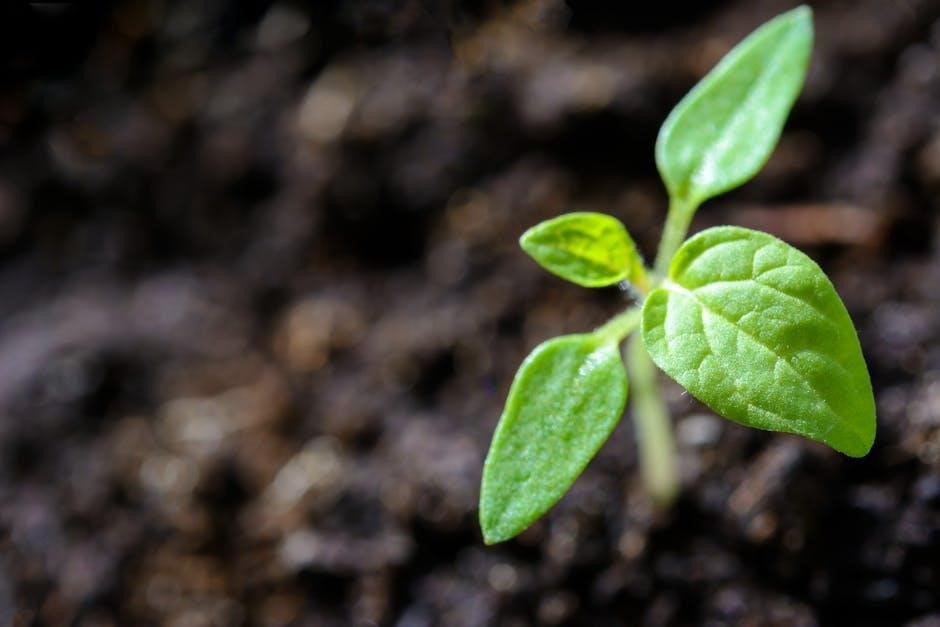
Displaying and Showcasing Your Crystals
After growing your crystals‚ showcase them creatively! Use LED lights or decorative stands to highlight their beauty. Displaying your crystals proudly shares your achievement and adds elegance to any space.
6.1 Using the Display Base and LED Light
The display base and LED light in your crystal growing kit are perfect for showcasing your crystals. Place the crystal on the base and use the LED light to highlight its facets and colors. This setup creates an eye-catching display‚ making your crystal stand out. Adjust the light angle to emphasize clarity and brilliance. The base stabilizes the crystal‚ preventing movement or damage. This feature allows you to proudly share your crystal-growing achievement with others‚ adding a decorative touch to any room.
6.2 Tips for Showcasing Your Crystals
To showcase your crystals effectively‚ choose a clean‚ stable surface and position them to catch natural light during the day. Rotate the crystals occasionally to display different facets. Consider placing them on a dark background to enhance visibility. Clean the crystals gently with a soft cloth and distilled water to maintain clarity. Labeling with the crystal’s name or growth details adds an educational touch. For a striking display‚ arrange multiple crystals in a group or use a glass case. This creates a visually appealing presentation and highlights your crystal-growing achievement.
6.3 Creating a Crystal Garden
To create a crystal garden‚ start by selecting a clear glass container and adding a layer of white sand or small rocks for drainage. Place activated charcoal to prevent mold. Gently position your crystals‚ ensuring they are secure. Add decorative elements like shells or pebbles for color. Seal the container and leave it in indirect sunlight. This setup creates a stunning‚ low-maintenance display. Rotate the garden periodically for even light distribution. Over time‚ it will become a beautiful centerpiece‚ showcasing your crystal-growing efforts in an artistic and visually appealing way.
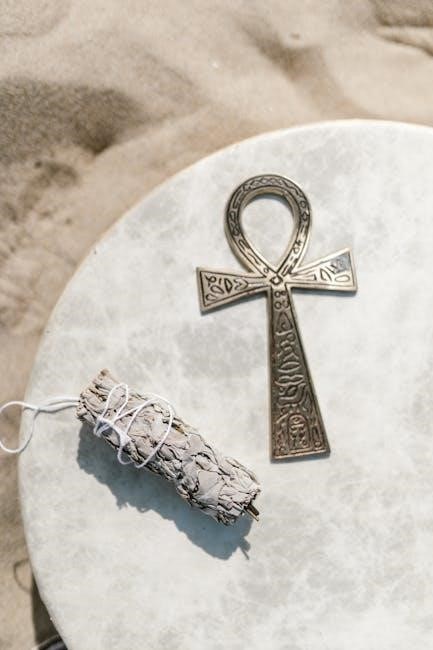
Maintaining the Crystal Growing Setup
Regularly inspect your crystal growing setup to ensure optimal conditions. Prevent contamination by keeping the area clean and storing materials properly. Monitor temperature and humidity levels to promote stable crystal growth. Clean equipment thoroughly after each use and reuse it safely. Organize components neatly to maintain efficiency and prevent accidents. By following these steps‚ you can extend the life of your setup and continue growing crystals successfully.
7.1 Regular Monitoring of the Growing Process
Regularly observe the crystal growth to track progress and ensure conditions remain stable. Check the solution’s clarity‚ temperature‚ and any visible changes in crystal formation. Maintain consistent environmental conditions to avoid disrupting the growth process. Monitor for signs of contamination or impurities that may affect crystal quality. Record observations daily to identify patterns or issues early. Consistent monitoring helps in achieving well-formed crystals and allows timely adjustments to optimize results. This step is crucial for understanding and controlling the crystal growth dynamics effectively.
7.2 Preventing Contamination
To prevent contamination‚ ensure all equipment is thoroughly cleaned with distilled water and dried before use. Use gloves when handling chemicals or crystals to avoid transferring skin oils. Keep the growing area dust-free and cover the container when not observing. Avoid touching the seed crystal or solution surface‚ as this can introduce bacteria or impurities. Regularly inspect the solution for cloudiness or particles‚ which may indicate contamination. Address any issues promptly to maintain a clean environment for crystal growth and achieve the best results.
7.3 Cleaning and Reusing Equipment
After each use‚ clean all equipment with distilled water and mild soap to remove residue. Use a soft-bristle brush to scrub stubborn stains or crystals. Rinse thoroughly to ensure no soap remains‚ as it can affect future growth. Dry equipment with a lint-free cloth to prevent water spots and bacterial growth. Store items in a clean‚ dry place to maintain their condition. Regular cleaning ensures equipment remains usable for multiple crystal-growing projects‚ reducing waste and extending the kit’s longevity.
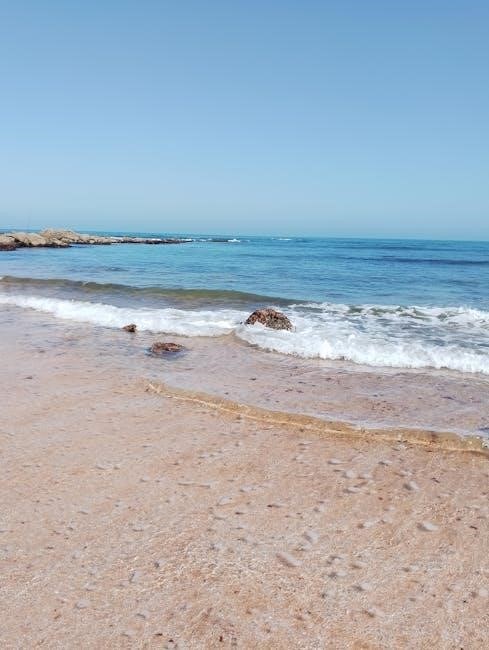
Educational and Scientific Concepts
Crystal growing kits offer insights into chemistry‚ geology‚ and physics‚ teaching concepts like solubility‚ nucleation‚ and mineral formation. They provide hands-on learning opportunities for STEM education.
8.1 Learning About Geology and Mineralogy
Crystal growing kits provide a hands-on introduction to geology and mineralogy‚ teaching users about the formation of minerals and crystals. By observing crystal growth‚ users can understand how minerals develop in nature‚ such as in rocks and caves. The process mimics geological events‚ offering insights into the Earth’s processes. This interactive learning tool helps students grasp concepts like crystal structures‚ nucleation‚ and the role of solutes in mineral formation‚ making it a valuable educational resource for studying Earth sciences and the natural world.
8.2 Understanding the Chemistry Behind Crystal Growth
Crystal growth involves fundamental chemical principles such as solubility‚ saturation‚ and nucleation. When a solution is super-saturated‚ it contains more dissolved material than it can hold under normal conditions. This instability triggers nucleation‚ where molecules cluster to form a crystal lattice. The process demonstrates how chemical equilibrium and concentration gradients drive crystal formation. By studying these interactions‚ users gain insight into the chemical dynamics that govern crystal growth‚ making it a practical way to explore chemistry concepts in a visually engaging manner.
8.3 STEM Learning Opportunities
Crystal growing kits offer a hands-on way to explore STEM concepts. Science is demonstrated through chemistry and geology‚ as students observe crystal formation. Technology and engineering come into play when designing experiments or controlling environmental factors like temperature. Mathematics is involved in measuring growth rates‚ calculating concentrations‚ and analyzing data. This activity fosters critical thinking‚ experimentation‚ and problem-solving skills‚ making it an engaging tool for interdisciplinary learning. It encourages curiosity and provides a practical understanding of scientific principles in a fun and interactive way.
Advanced Tips for Better Crystal Growth
Filter solutions to prevent impurities‚ use a seed crystal for consistent growth‚ and maintain a stable environment. Monitor temperature and humidity to optimize results.
9.1 Optimizing Solution Saturation
To achieve optimal crystal growth‚ it’s crucial to balance the solution’s saturation. Start by dissolving the crystal powder in warm water‚ stirring until fully incorporated. Avoid over-saturation‚ as this can lead to premature crystal formation or cloudiness. Once dissolved‚ allow the solution to cool slowly to encourage proper nucleation. For precise control‚ use a hydrometer to measure the solution’s density. Aim for a slight supersaturation to promote growth without excessive crystal formation. Regularly monitor the solution to ensure it remains within the ideal saturation range for crystal development.
9.2 Controlling Environmental Factors
Controlling environmental factors is crucial for successful crystal growth. Maintain a consistent temperature‚ as fluctuations can disrupt the process. Use a thermometer to monitor and adjust the environment. Humidity levels should be kept stable to prevent excessive evaporation. Place the crystal-growing setup in a vibration-free area to avoid disturbing the solution. Avoid direct sunlight‚ as it can cause uneven growth. Ensure the area is draft-free to maintain a stable environment. By carefully managing these factors‚ you can create optimal conditions for crystal formation and achieve better results.
9.3 Experimenting with Different Chemicals
Experimenting with different chemicals can yield unique crystal structures and colors. Try using copper sulfate for blue crystals‚ alum for octahedral shapes‚ or borax for delicate formations. Each chemical has distinct solubility and growth patterns. Start with small amounts to test saturation levels. Add food coloring to create vibrant hues. Record observations to refine techniques. Always follow safety guidelines when handling new substances‚ as some may require special precautions. This exploration enhances understanding of chemical properties and their role in crystal formation‚ fostering creativity and scientific discovery.
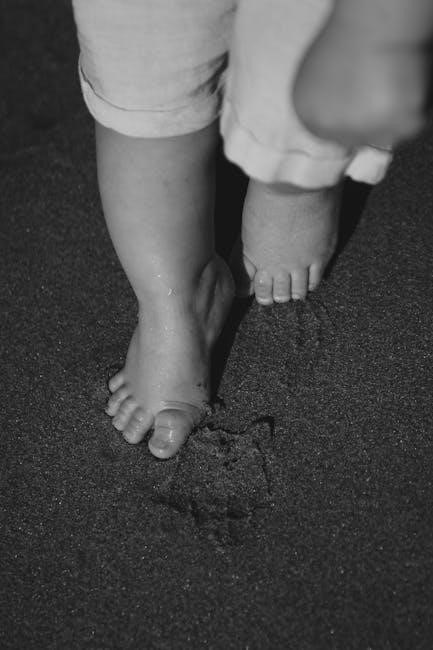
Safety Guidelines and Precautions
10.1 Handling Chemicals Safely
Always wear gloves and goggles when handling chemicals to avoid skin and eye irritation. Ensure proper ventilation and follow instructions carefully.
10.2 Wearing Protective Gear
Use lab coats‚ gloves‚ and goggles to protect against chemical spills and splashes. Keep a first aid kit nearby in case of emergencies.
10.3 Emergency Procedures
In case of skin contact‚ rinse with water. For eye exposure‚ flush with water and seek medical help. Keep chemicals out of reach of children and pets.
- Wash hands thoroughly after handling chemicals.
- Store leftover materials in labeled containers.
- Dispose of waste according to local regulations.
When working with a crystal growing kit‚ it’s essential to handle chemicals safely. Always wear gloves and goggles to protect against skin and eye irritation. Ensure the workspace is well-ventilated to avoid inhaling fumes. Read the instructions carefully and measure chemicals accurately using the provided tools. Avoid ingesting any substances‚ and keep them out of reach of children and pets. Store chemicals in their original containers and dispose of leftovers properly. Follow the recommended safety guidelines to minimize risks and ensure a safe crystal-growing experience.
When working with crystal growing kits‚ it’s essential to wear protective gear to ensure safety. This includes gloves to prevent skin contact with chemicals‚ goggles to protect eyes from splashes‚ and a lab coat or apron to avoid staining clothing. These precautions help prevent accidental exposure to potentially harmful substances. Always ensure the workspace is clean and well-ventilated to minimize risks. Proper protective gear not only safeguards against immediate hazards but also promotes a safe and enjoyable crystal-growing experience.
In case of an accident while using a crystal growing kit‚ stay calm and act quickly. If chemicals come into contact with skin or eyes‚ immediately flush with plenty of water for at least 15 minutes. If inhaled‚ move to fresh air and use a mask if necessary. For ingestion‚ seek medical attention right away. Keep a first aid kit nearby and ensure adults supervise children. Always have emergency contact numbers handy‚ such as the local poison control center. Proper preparation and quick action can prevent minor incidents from becoming serious.

Troubleshooting Common Issues
When growing crystals‚ common issues like no growth‚ uneven growth‚ or imperfections can occur. These are often due to improper solution saturation‚ temperature fluctuations‚ or contamination. Always ensure the solution is prepared correctly and the environment is stable. Patient monitoring and adjustments can help resolve these issues effectively.
11.1 Dealing with No Crystal Growth
If no crystals form‚ check the solution saturation. Ensure the chemical mixture is correct and sufficiently dissolved. A seed crystal is essential‚ so verify its placement and cleanliness. Temperature fluctuations can hinder growth‚ so maintain a stable environment. Contamination may also prevent crystallization; use sterile tools and a clean workspace. Allow more time‚ as crystal formation can be slow. If issues persist‚ prepare a fresh solution and restart the process. Always refer to the kit’s instructions or consult additional resources for troubleshooting guidance. Patience and careful observation are key to resolving this common challenge.
11.2 Managing Too Fast or Uneven Growth
When crystal growth occurs too quickly or unevenly‚ it can lead to imperfections or unstable structures. To address this‚ reduce the solution’s supersaturation by slightly lowering the temperature or diluting the solution with distilled water. Ensure the seed crystal is securely placed to promote even growth. Avoid disturbing the setup‚ as vibrations can disrupt crystal formation. Monitoring the environment and adjusting conditions patiently will help achieve balanced and uniform crystal growth over time. Regular observation ensures optimal results.
11.3 Avoiding Imperfections in Crystals
To avoid imperfections in crystals‚ ensure the solution is free from dust and undissolved particles. Use a clean‚ stable surface for crystal growth to prevent vibrations. Cover the container to minimize contamination and maintain a consistent environment. Avoid rapid cooling‚ as it can cause defects. Inspect the seed crystal for flaws before starting. Regularly monitor the solution and remove any debris. Proper saturation levels and controlled evaporation rates also help in forming flawless crystals. By maintaining these conditions‚ you can achieve clearer‚ more uniform crystal structures.
Completing the crystal growing process brings a sense of accomplishment and wonder. This activity combines science‚ patience‚ and creativity‚ offering a rewarding STEM experience for all ages. Experiment with different chemicals and techniques to explore crystal growth further. Share your results and inspire others to discover the beauty of crystal formation through hands-on learning.
12.1 Summary of the Crystal Growing Process
The crystal growing process involves preparing a saturated solution‚ setting up the growth environment‚ and allowing crystals to form over time. By dissolving the provided chemicals in water‚ creating a super-saturated solution‚ and introducing a seed crystal‚ you initiate nucleation. Monitoring temperature and solution saturation ensures optimal growth. Patience is key as crystals develop gradually. This hands-on activity teaches fundamental scientific principles while yielding beautiful‚ shimmering crystals. The process combines chemistry‚ geology‚ and observation‚ making it both educational and rewarding. Proper setup and maintenance lead to successful crystal formation‚ offering a sense of accomplishment and scientific insight.
12.2 Encouraging Further Exploration
Crystal growing is a fascinating science project that offers endless opportunities for exploration and learning. After successfully growing your first crystals‚ consider experimenting with different chemicals‚ shapes‚ and colors to create unique formations. Encourage curiosity by researching how crystals form in nature and their real-world applications. Share your results with others to inspire their interest in STEM fields. This hands-on activity not only fosters creativity but also deepens understanding of scientific principles. Keep exploring‚ and you might discover new ways to grow even more impressive crystals!
12.3 Sharing Your Crystal Growing Results
Sharing your crystal growing results can be a rewarding way to showcase your accomplishment. Document your crystals with high-quality photos or videos‚ highlighting their size‚ color‚ and clarity. Use social media platforms to post your achievements‚ joining crystal growing communities for feedback and inspiration. Consider displaying your crystals in a glass case or on a shelf to create a visually appealing arrangement. You can also share your experience with friends‚ family‚ or local science clubs‚ inspiring others to explore crystal growth.
This is a great way to connect with fellow enthusiasts and learn new techniques!